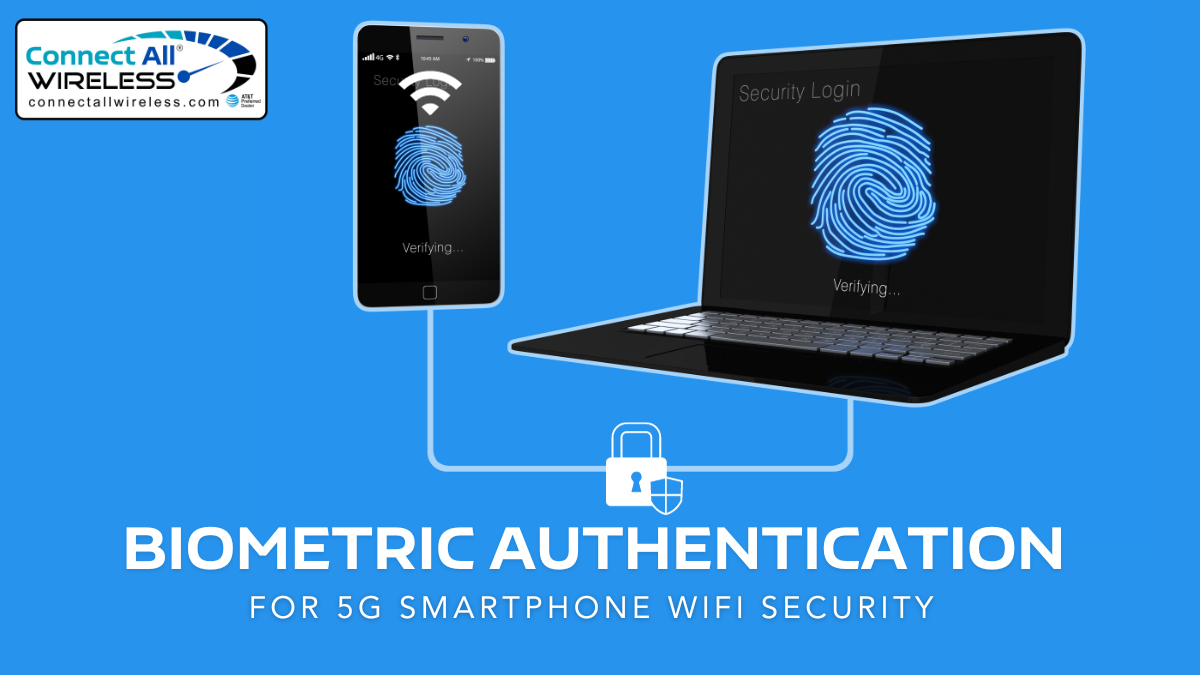Biometric Authentication for 5G Smartphone WiFi Security
November 6, 2023In the era of 5G technology, where the demand for faster and more secure internet connections is at an all-time high, smartphone WiFi security has become a top priority for both individuals and organizations. With the proliferation of smart devices and the increasing reliance on WiFi networks for communication, entertainment, and work, the need for robust security measures has never been more critical. Biometric authentication, a cutting-edge security solution, is now making its way into the realm of 5G smartphones to enhance WiFi security. In this blog post, we’ll explore the significance of biometric authentication in 5G smartphone WiFi security and how it’s revolutionizing the way we protect our devices and data.
The 5G Revolution: Demanding Stronger Security
The advent of 5G technology offers the potential for incredibly rapid internet speeds, minimal latency, and improved connectivity. While these advancements offer numerous benefits, they also introduce new security challenges. Faster internet connections make it easier for hackers to infiltrate devices and networks, putting sensitive data at risk. As a result, safeguarding WiFi connections on 5G smartphones has become a top priority.
The Limitations of Traditional Passwords
Traditional security methods, such as using alphanumeric passwords, have proven to be insufficient in providing robust protection. Users often choose weak passwords, reuse them across multiple accounts, or fall victim to phishing attacks. Furthermore, passwords are prone to being either forgotten or stolen, which can result in unauthorized access. In the context of 5G smartphones, these vulnerabilities are magnified, necessitating a more secure and user-friendly approach.
Enter Biometric Authentication
Biometric authentication offers a groundbreaking solution to the security challenges posed by 5G smartphones. Instead of relying on something that users know (a password), biometric authentication verifies a person’s identity based on unique physical or behavioral characteristics. Here are some of the most commonly used biometric authentication methods and how they can enhance WiFi security on 5G smartphones:
- Fingerprint Recognition: Fingerprint sensors embedded in modern smartphones have gained widespread acceptance. They provide a quick and secure way to unlock your device and authenticate WiFi connections. With 5G technology, the speed and efficiency of fingerprint recognition are even more crucial, ensuring that your network connections are established securely in the blink of an eye.
- Facial Recognition: Facial recognition technology has made significant advancements, thanks to 3D mapping and AI algorithms. Your 5G smartphone can now scan your face to authenticate you, adding an extra layer of security to your WiFi connections. This method is not only convenient but also highly secure.
- Voice Recognition: Voice recognition is another biometric authentication method that can be employed for WiFi security. Your smartphone can analyze your unique vocal characteristics to confirm your identity. With the speed and low latency of 5G networks, voice recognition can be executed in real-time, enhancing security without compromising on speed.
The Advantages of Biometric Authentication
Biometric authentication offers several advantages over traditional passwords, especially in the context of 5G smartphone WiFi security:
- Enhanced Security: Biometric data is unique to each individual, making it extremely difficult for unauthorized users to gain access. This uniqueness significantly improves the security of your device and network.
- Convenience: Biometric authentication is incredibly convenient. Users are not required to memorize intricate passwords or carry tangible tokens. A simple fingerprint, face scan, or voice command is all that’s required for authentication.
- Speed and Efficiency: 5G networks are all about speed and efficiency. Biometric authentication methods align perfectly with these goals, ensuring that users can connect to WiFi networks quickly and securely.
- Reduced Risk of Phishing: Phishing attacks that target passwords become irrelevant when using biometric authentication. Hackers can’t trick users into revealing their biometric data.
Challenges and Considerations
While biometric authentication offers many benefits, it’s not without its challenges and considerations. The primary concern is the security of biometric data itself. If a database storing biometric information is breached, it could have severe consequences. Manufacturers and service providers must implement robust security measures to protect this sensitive data.
Furthermore, the availability and accuracy of biometric authentication methods may vary among different devices and manufacturers. Users need to choose devices and services that offer reliable and secure biometric authentication.
Conclusion
The integration of biometric authentication into 5G smartphone WiFi security is a significant step towards enhancing the protection of 5G WiFi Internet in Michigan. By leveraging cutting-edge technologies like facial recognition and fingerprint scanning, this approach offers robust safeguards against unauthorized access. As the demand for high-speed, secure connectivity continues to rise, the combination of 5G and biometrics presents a compelling solution to ensure the privacy and data security of Michigan residents. Embracing this fusion of innovation will undoubtedly contribute to a safer and more efficient digital landscape in the state.


